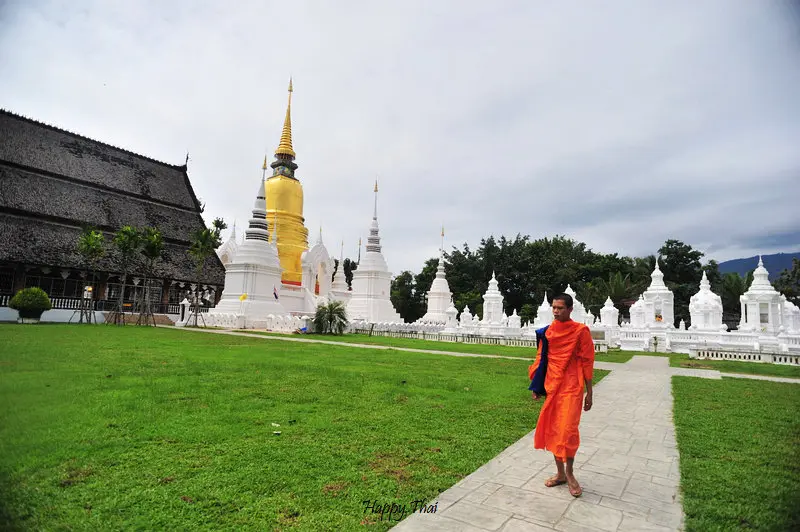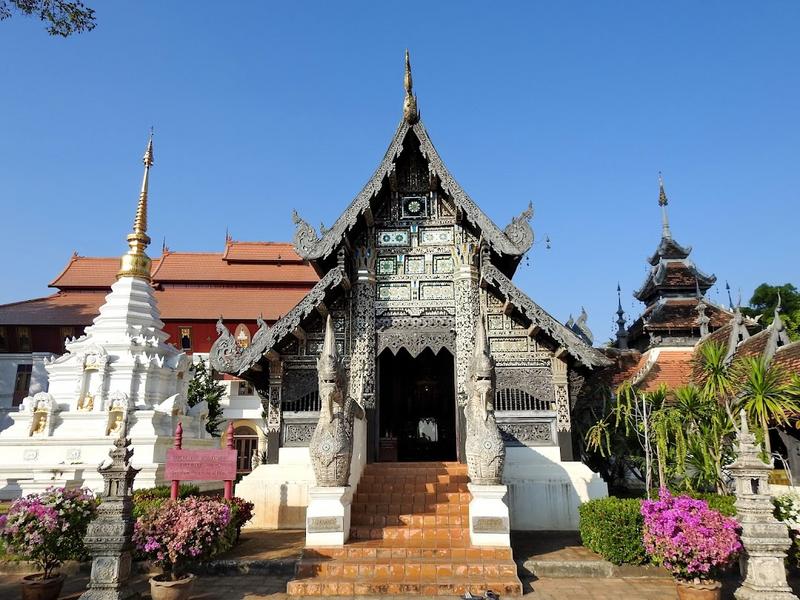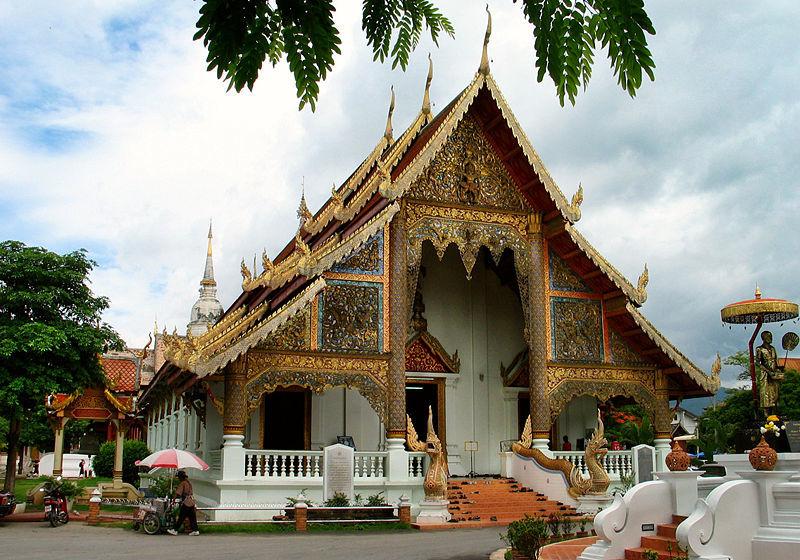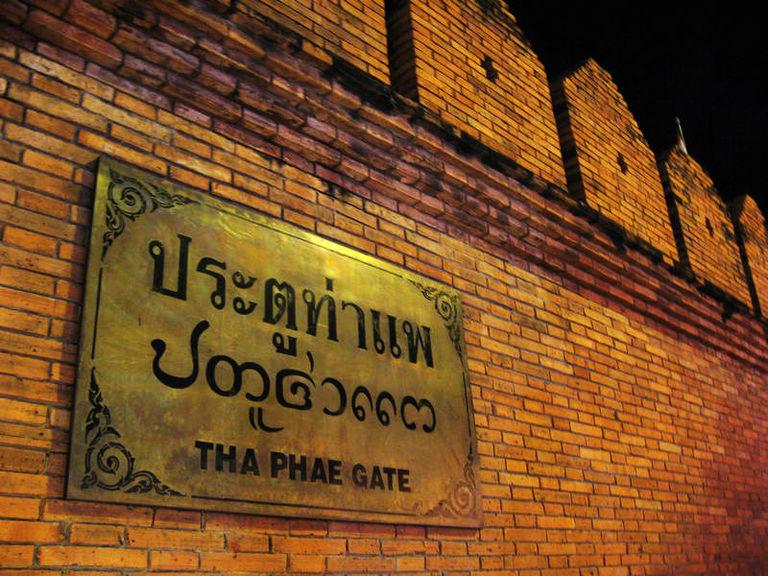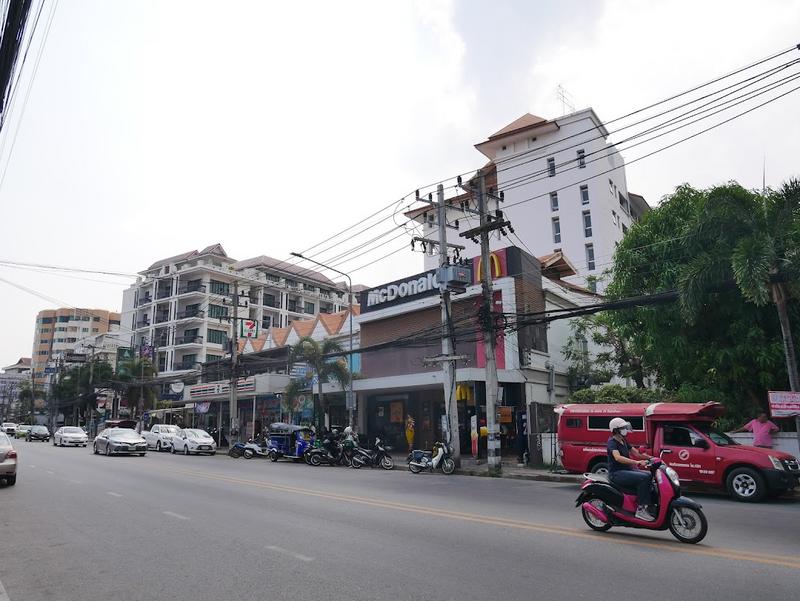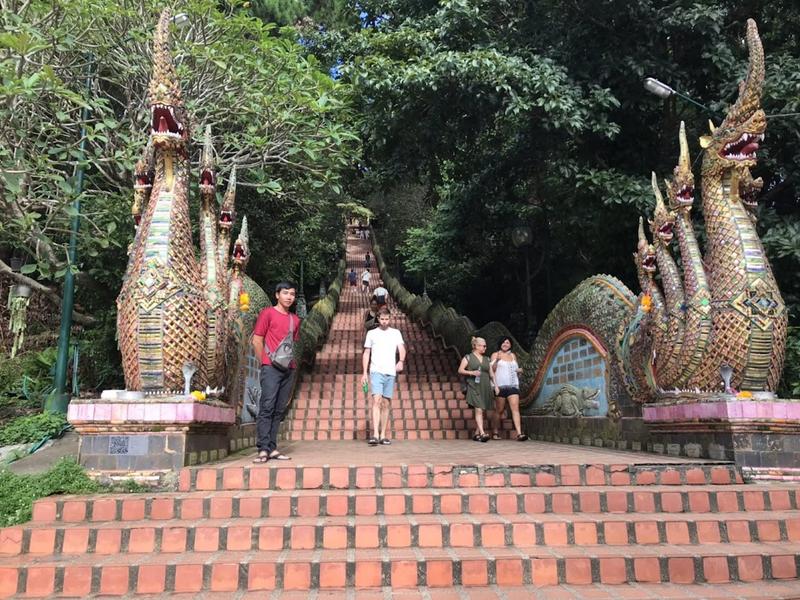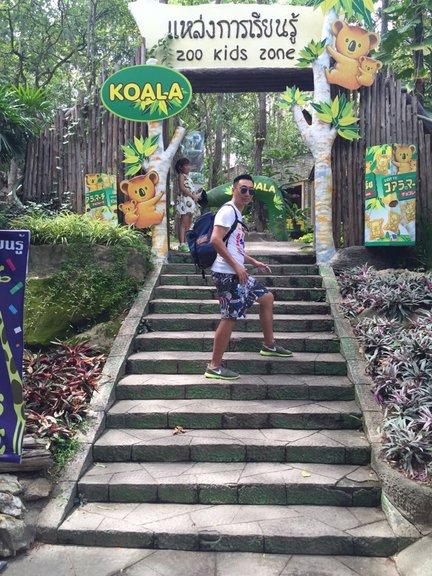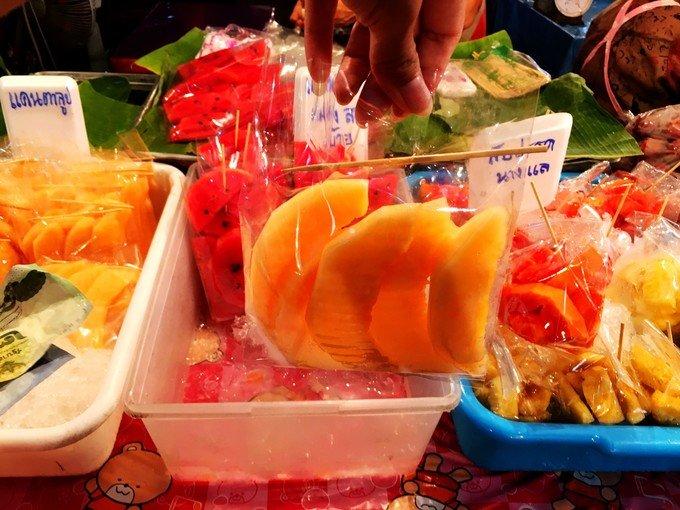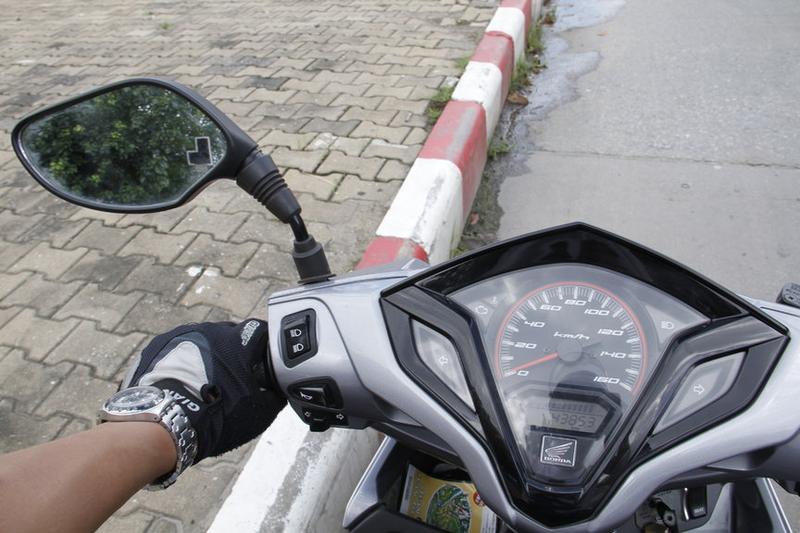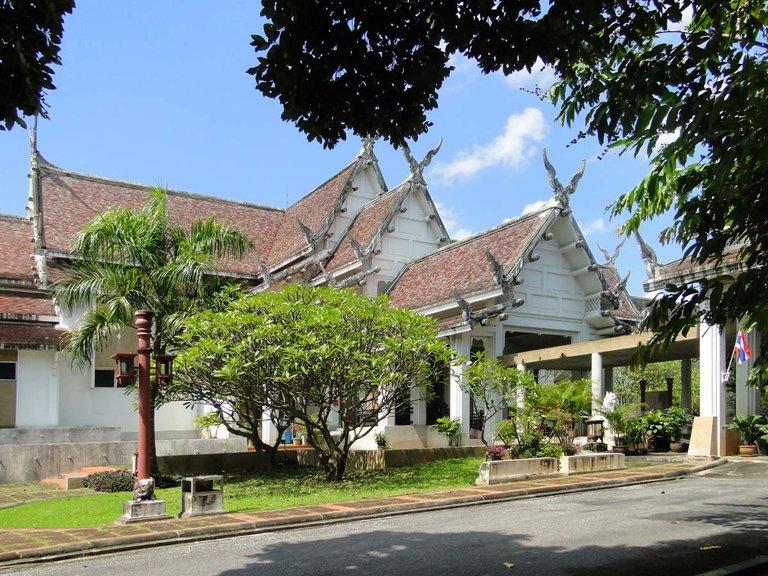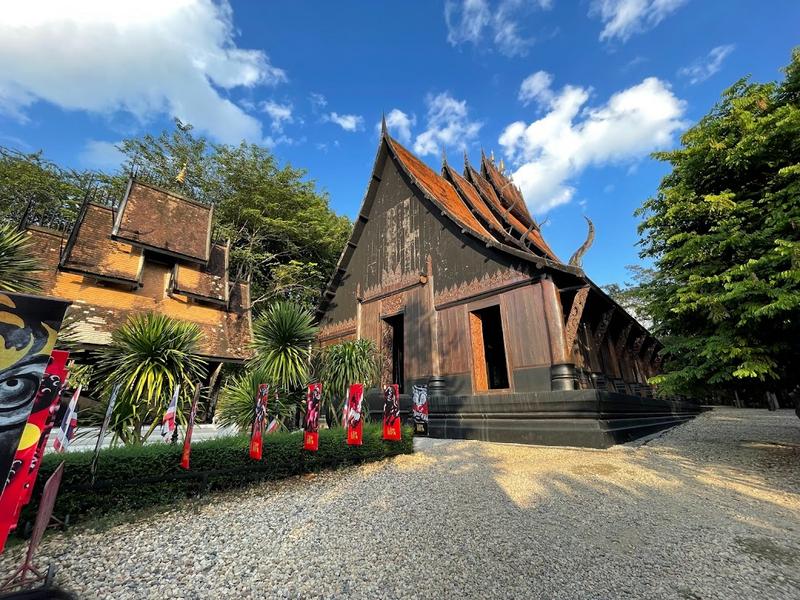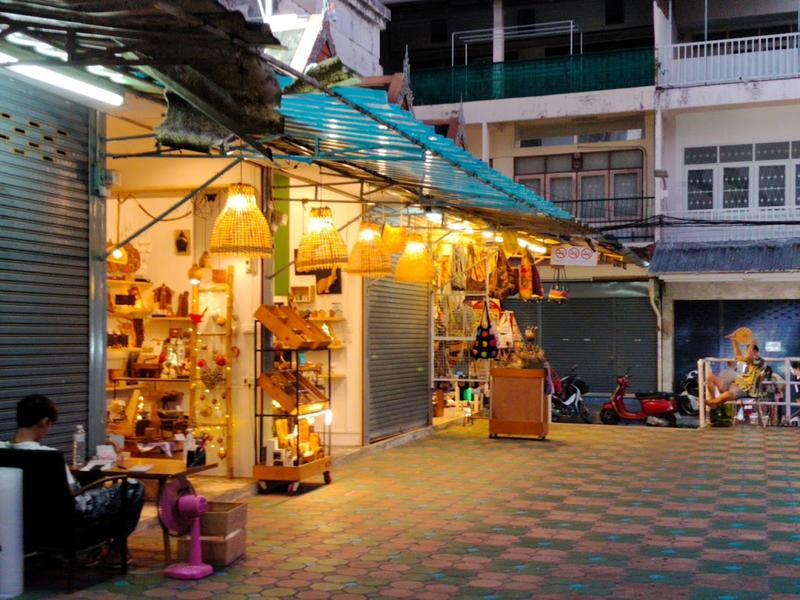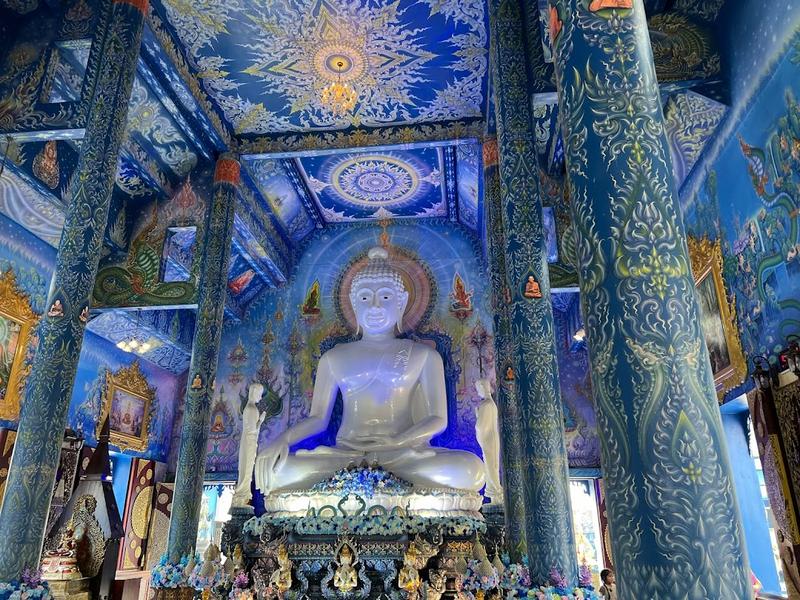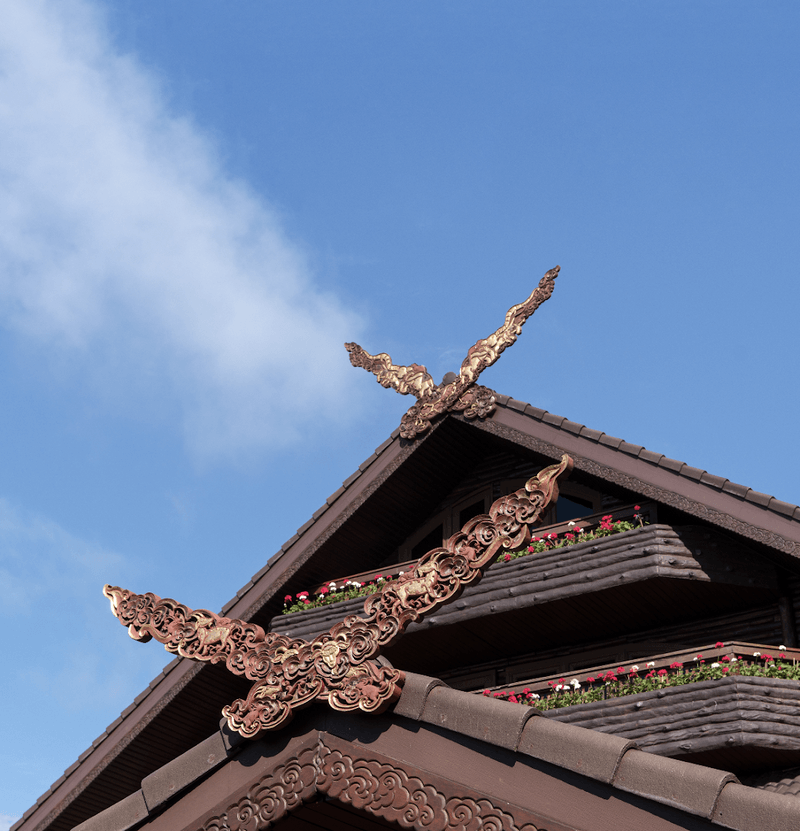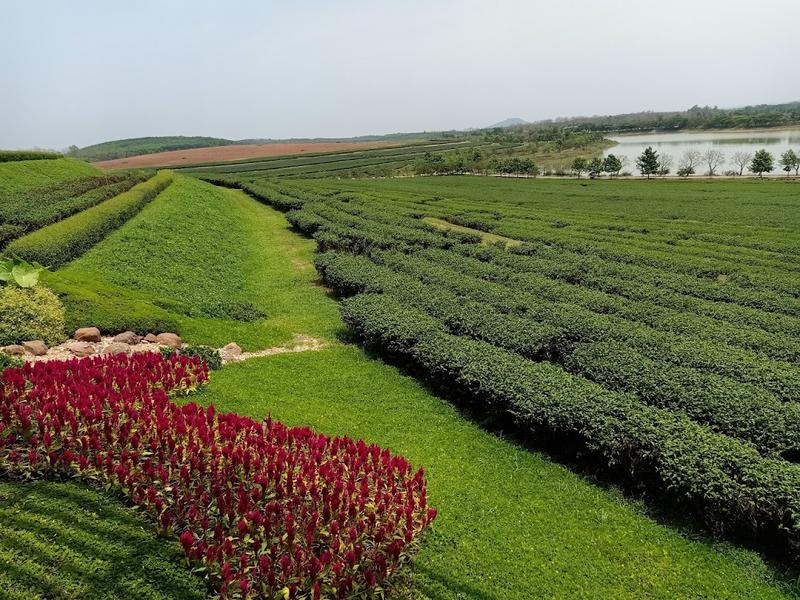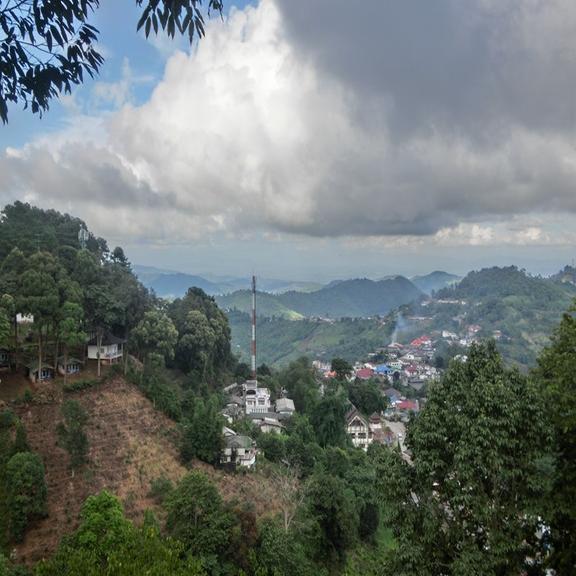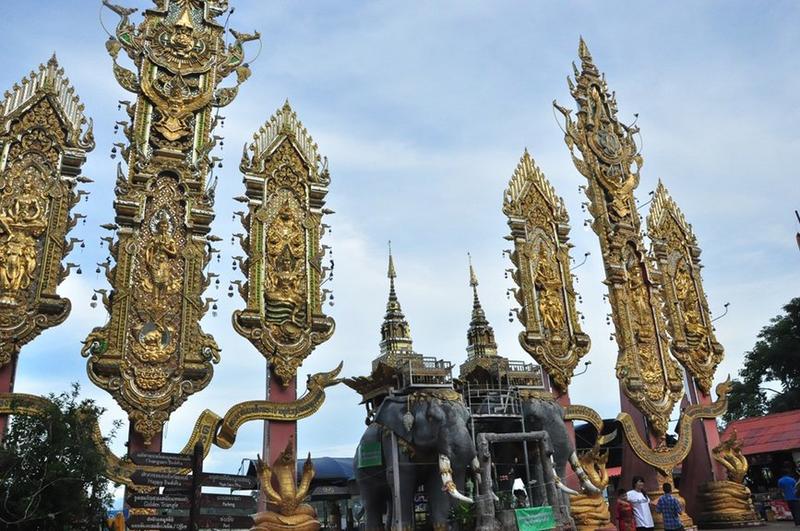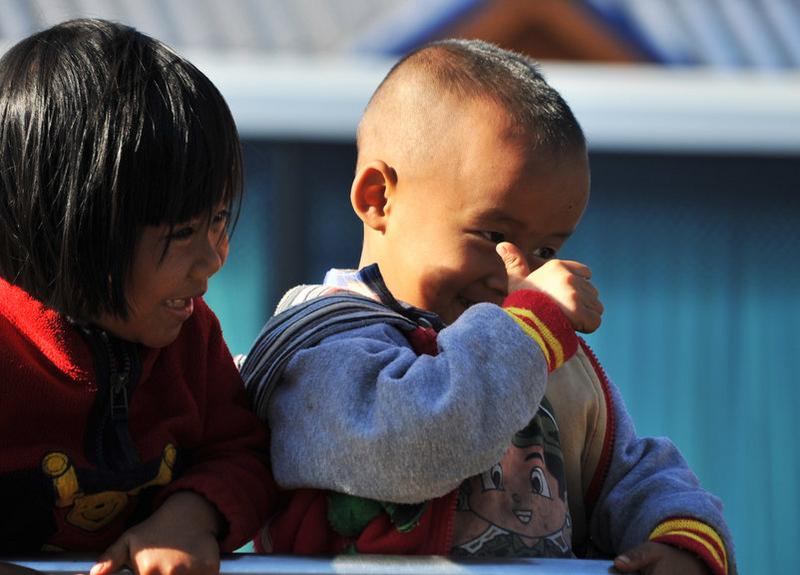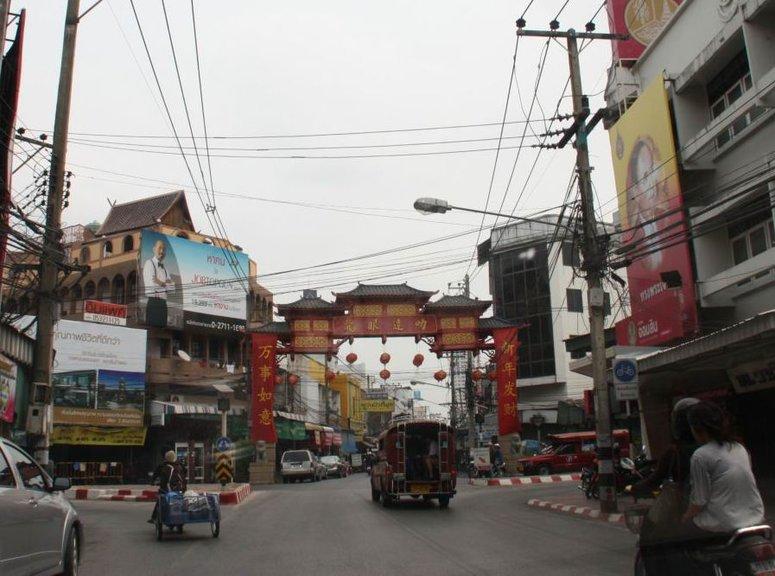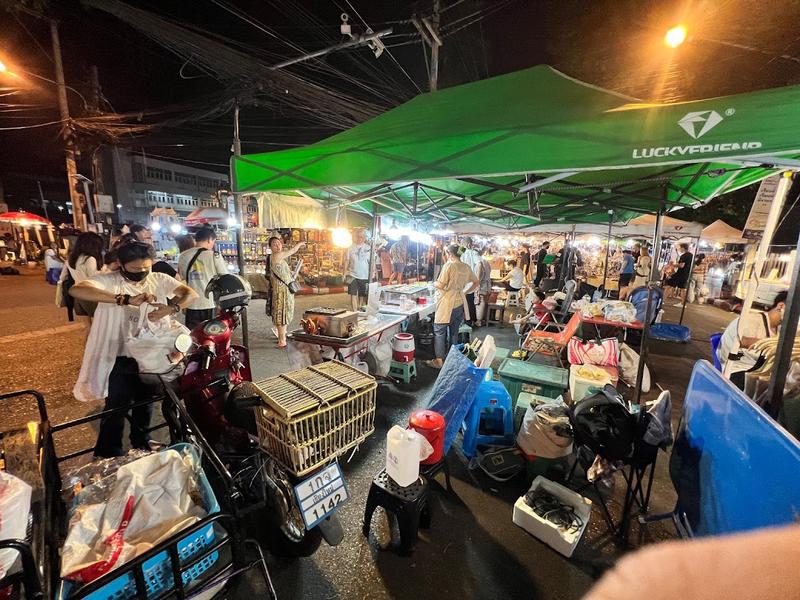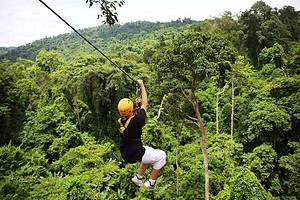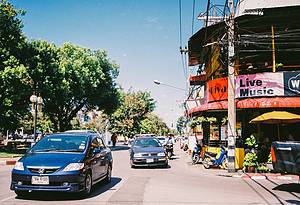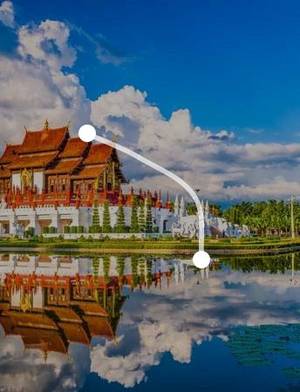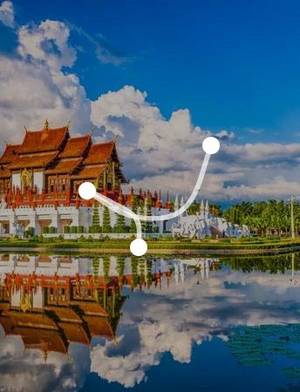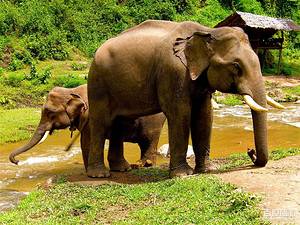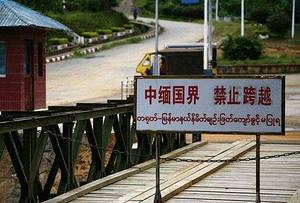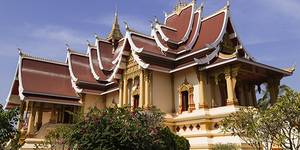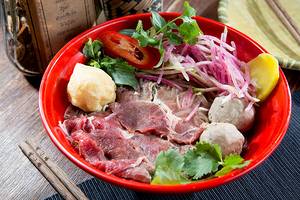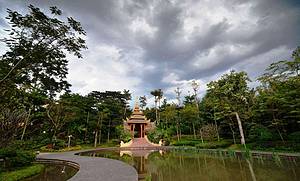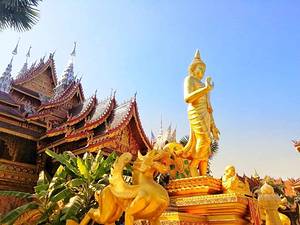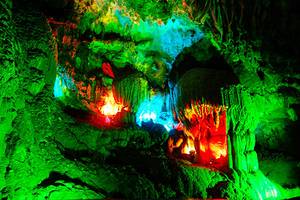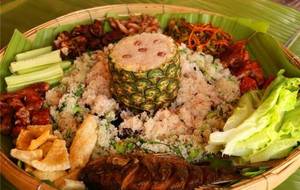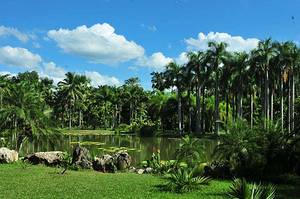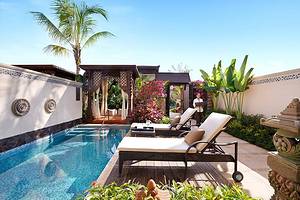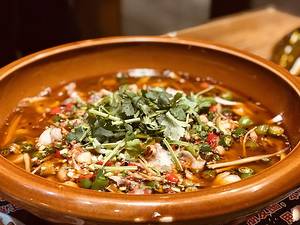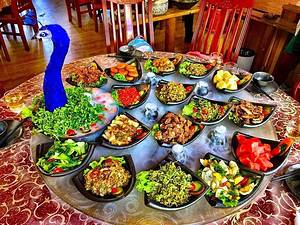Chiang Mai Chiang Rai Twin Cities 8 Days
2 cities |
23 attraction(s) |
total distance 607
km
 TIPS
TIPS
Day1
Day2
Day3
Day4
Day5
Day6
Day7
Day8
Day1: Chiang Mai
5 attraction(s) ·
6 km
1
One of Thailand's important cultural heritages, the ancient city is in a square shape with a perimeter of approximately 1.5 kilometers, and the city walls and moat are well-preserved. Inside the ancient city, there are numerous traditional temples and pagodas, as well as unique hotels, guesthouses, cafes, and restaurants. There are many city gates in the ancient city, and the East Gate Tapae Gate is well-preserved.
Famous temples in the ancient city include Wat Chedi Luang, Wat Phra Singh, and Wat Chiang Man, most of which can be visited for free, with only a 20 Baht entrance fee for foreigners at Wat Phra Singh.
The ancient city is also the location of the popular Sunday Night Market, which is held on the street near the East Gate Tapae Gate.
1
km
2
Temple complex with a partially crumbled 15th-century chedi & a pillar believed to protect the city.
1
km
3
Wat Phra Singh, built in 1345, is the largest temple in the ancient city of Chiang Mai and one of the must-visit attractions for tourists. The most famous part of the temple is the sacred hall that houses the Phra Singh, a lion-shaped Buddha statue. It is the highest-ranking and largest temple in Chiang Mai, alongside Wat Chedi Luang. The temple has undergone several expansions and renovations to reach its present size. It houses the ashes of King Kaewfa and exquisite wooden carvings and murals. The most impressive feature is the gold-plated Phra Singh Buddha statue, which gives the temple its name. The temple also features a library and collection of traditional art. The outside walls are adorned with large advertisements about Buddhism, and two white mythological creatures stand at the entrance. Inside the temple, traditional music is performed while the temple is lit up with decorations. Across the street from Wat Phra Singh is Wat Pha Bong.
2
km
4
The East Gate of the old city in Chiang Mai is a prominent landmark and the starting point of the Sunday Night Market. It is easy to find and offers an opportunity to interact closely with the locals and experience their joys and sorrows. I also recommend visiting the Warorot Market, where you can join the locals in small transactions and gain a deeper understanding of the authentic life in northern Thailand.
4
km
5
Buzzing road lined with craft coffee shops, boutiques, hip restaurants & cocktail bars.
Day2: Chiang Mai
4 attraction(s) ·
12 km
1
5,499-foot mountain featuring trails through evergreen forests & a picturesque, hilltop temple.
4
km
2
In addition to its gold stupa, pagodas & museum, this mountainside temple offers broad city views.
3
km
3
Chiang Mai Zoo was established in 1974 and is located in Chiang Mai, northern Thailand. It was originally a privately owned zoo and became an official zoo on June 16, 1977. The zoo features a monorail and a 133-meter-long aquarium, allowing visitors to observe various animals in an excellent position and experience the animal culture of Thailand.
6
km
Day3: Chiang Mai
2 attraction(s) ·
3 km
1
Chiang Mai University was founded in 1964 and is the first higher education institution in northern Thailand. Today, it is ranked second in Thailand and is the top university outside of Bangkok. The campus covers an area of 14 square kilometers and has 107 faculties, with over 18,000 students and over 2,000 faculty members. While its overall academic reputation may not match some of the well-known universities in Bangkok, Chiang Mai University is highly regarded for its engineering and medical technology programs, earning a good reputation. Additionally, the campus is located near Doi Suthep Mountain, about 2 kilometers west of the city center, offering a beautiful environment.
3
km
2
The museum comprehensively collects and introduces the Lanna art and culture of northern Thailand. The first floor showcases Buddha statues, artworks, and weaponry from the 14th and 15th centuries. The second floor displays daily items and photographs of the various mountainous ethnic groups in northern Thailand, serving as a center for ethnology and education, dedicated to preserving and promoting Lanna culture. The museum received the honor of an opening ceremony attended by King Bhumibol Adulyadej and Queen Sirikit on February 6, 1973. The museum's architecture and facilities have a strong Lanna style, and the spacious interior makes it the best place to learn about Lanna history.
Day4: Chiang Rai
3 attraction(s) ·
32 km
1
White Temple, designed and constructed by the renowned Thai architect Chalermchai Kositpipat in 1997, features a theme based on Buddhist mythology. The white color symbolizes purity, and the shimmering glass fragments reflect wisdom. The main building is made of white cement and adorned with intricate decorative patterns and reflective tiles, which shine brightly in the sunlight, with water ponds in front and behind. Inside the main hall, there is a small Buddha statue, and the wall behind it is adorned with hand-painted Buddha murals, depicting crashing waves on the sides. In the completed sections, there are interesting character paintings on the wall opposite the main Buddha statue. There are also four skull heads on the railings, and Four-Faced Buddha statues in other areas. As the temple was built at the designer's own expense, the proceeds from the souvenir shop are also used for the temple's construction funds. The temple is still under construction to this day.
22
km
2
A collection of wood buildings featuring works by Thawan Duchanee & other contemporary Thai artists.
10
km
3
Compact night market offering street food, apparel, jewelry & gifts, plus live entertainment.
Day5: Chiang Rai
3 attraction(s) ·
90 km
1
Monumental, modern Buddhist temple distinguished by its vivid blue coloring & elaborate carvings.
41
km
2
Former royal summer residence with a botanical park, gardens, rock formations & museum.
49
km
Day6: Chiang Rai
3 attraction(s) ·
204 km
1
Mae Salong is located in Chiang Rai province in northern Thailand, and is an important tea production area and tourist destination, hence also known as the "Thailand Spring City" and "Chinese Village". Many soldiers and their descendants from the North Vietnamese Army's 93rd Division live in Mae Salong which is located in the mountainous area of northern Thailand. In addition to the Chinese, there are also 5 ethnic minority groups living here.
53
km
2
In the border areas of Myanmar, Laos, and Thailand, there is a region with a total area of about 150,000-200,000 square kilometers. The mountains here stretch continuously, making transportation very difficult. The Thai government built an arch with the words "Golden Triangle" at the junction of the three countries, hence the name Golden Triangle. Today, this region has begun to develop into a tourist destination.
152
km
3
The preferred attraction for a one-day trip in Chiang Rai is a series of hot springs pools. The water in the pools is sulfur hot spring water, some of which can be used to boil eggs, while others are suitable for foot soaking. The best part is that all of these hot springs pools are free. Additionally, there are also some intermittent geysers in the area. This attraction is located near other popular destinations, making it a common starting point for one-day tours organized by travel agencies. Many tourists use it as a transit point.
Day7: Chiang Mai
2 attraction(s) ·
2 km
1
Like many Chinatowns around the world, Chiang Mai also has a Chinese area that gathers numerous stalls selling local snacks, crafts, and souvenirs. This area is called Warorot Market and it is located in the new city district.
2
km
2
Bustling, colorful Sunday night market for local produce, prepared foods, crafts & souvenirs.
Day8: Chiang Mai
3 attraction(s) ·
8 km
1
Chiang Mai Zoo was established in 1974 and is located in Chiang Mai, northern Thailand. It was originally a privately owned zoo and became an official zoo on June 16, 1977. The zoo features a monorail and a 133-meter-long aquarium, allowing visitors to observe various animals in an excellent position and experience the animal culture of Thailand.
4
km
2
The museum comprehensively collects and introduces the Lanna art and culture of northern Thailand. The first floor showcases Buddha statues, artworks, and weaponry from the 14th and 15th centuries. The second floor displays daily items and photographs of the various mountainous ethnic groups in northern Thailand, serving as a center for ethnology and education, dedicated to preserving and promoting Lanna culture. The museum received the honor of an opening ceremony attended by King Bhumibol Adulyadej and Queen Sirikit on February 6, 1973. The museum's architecture and facilities have a strong Lanna style, and the spacious interior makes it the best place to learn about Lanna history.
5
km
3
Airport offering domestic flights & service to destinations in Asia, plus business lounges & more.
